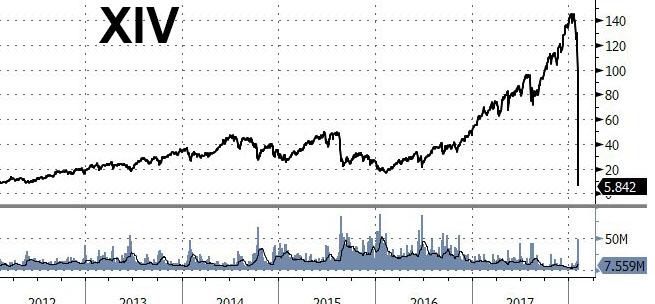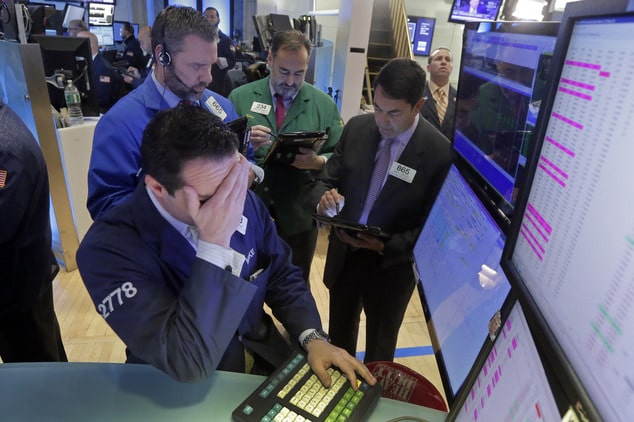The last couple of days have triggered a number of controversial events in the financial industry, which at first glance are not important for retail FX/CFDs brokers. Products that have previously seemed safe to invest in are shaken, and multi-year profits of the short volume Russian roulette crowd have been wiped out. ETNs, ETFs, VIX Futures (and vanilla plain indices) have all been dominating the headlines of the financial media, but other than that everything seems fine, right?
Discover credible partners and premium clients at China’s leading finance event!
Brokers didn’t express any concerns about managing the risk that traders are exposed to. Asset classes outside of stocks have yawned. Gold ignored the largest point drop in the history of the Dow Jones Industrial Average on Monday as the safe haven bids are nowhere to be seen.
[gptAdvertisement]
Instead, everyone is talking about the VIX and the point drop. The trade that has been feeding short-term speculators (and some pension funds I hear) for years has been demolished. The volatility tracking Exchange-Traded Notes of Credit Suisse and Nomura left institutional and retail investors deep in the red. The short volatility trade has been working for the most part of 2017, netting a doubling of one-sided bets against the measure.

Long-term Chart of the Inverse Volatility ETN of Credit Suisse
Why and How are Brokers Exposed to Volatility?
Historically, the value of global stock markets has been a very small concern for retail CFDs brokers. That, however, doesn’t mean that they are well protected against black swans in this market. Both market makers and STP brokers are holding risk, especially after the negative balance adjustment which has become something of a done deal in the latest ESMA projections on new regulations.
Last year France and Germany acted decisively to cement the floor for retail investors, enacting limitations on the losses that they can sustain from trading.
But let’s not get carried away: Monday’s (and to an extent Friday’s) selloff happened out of the blue, with no new information on the horizon. The markets tanked because of something we already knew - interest rates are rising, and will most likely continue to rise.
Can you imagine what could happen to your CFD book if 70% of traders are shorting a given stock index or share and 30% are buying it and a real Black Swan happens (i.e. something unexpected)? Assuming that you are a market maker, that would result in material losses for your brokerage, especially if the market is closed and the event happens over the weekend (if we are going to fantasize, let’s take the worst case scenario).
Imagine a Living Hell
I am not going to elaborate on what the nasty unexpected event might be, let’s leave this out of the picture for now. As the Asian session gets underway, a gap of 20% sends ripples through the global financial system. Your book is heavily exposed and traders that are short are taking profits, while those that are long the market have lost their funds.
If you are an STP broker you can imagine a scenario similar to the SNB crisis. In that case, of course, let’s imagine that most of your book was long the market. When clients’ negative equity is waived, you are on the hook with the Liquidity provider. If you have a special agreement and the liquidity provider took on that risk, then he is on the hook with the next counterparty. Either way, there is massive damage to the industry and another wave of regulatory reform.
I’ll just stop here for now. The first wave of warning signs about the broken stock markets is upon us. Luckily most of our industry is still heavily relying on the least volatile asset class of them all: foreign exchange.
FX Markets Unscathed (For Now)
While the past few days have shown how illiquid global equity markets can get, the FX market is nowhere near worried. In contrast to the US stock market flash crashes in the past (May 2010 is the closest to my memory), the adverse effects of a rise in volatility did not cause a dramatic shift into the yen, nor massive buying of gold. Volatility aside, liquidity on the other markets remained well supported throughout the worst of the market selloff.
We are a SOLID Banana Republic! Woot! https://t.co/1TdQNjJk9K pic.twitter.com/VYVmGDi2el
— Eric Scott Hunsader (@nanexllc) February 7, 2018
The excess volatility that was observed across US equity futures was most vividly illustrated by the founder of market data company Nanex LLC, Eric Scott Hunsader.
He shared on his Twitter account an old-school stereo volume counter showing the liquidity levels on the US S&P index futures contracts. The Chicago-based company’s website has quickly become my homepage. Kudos!






















